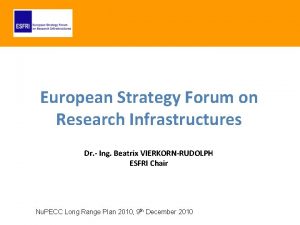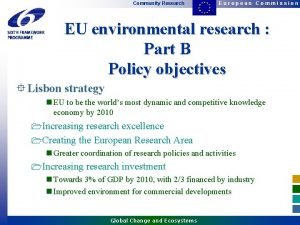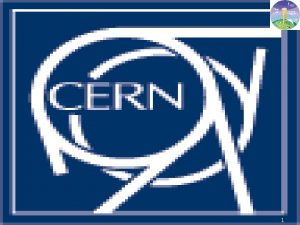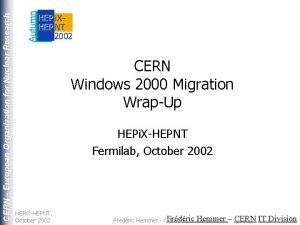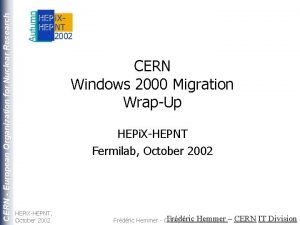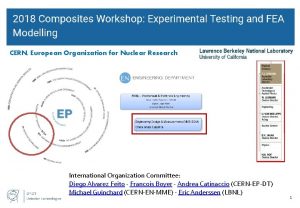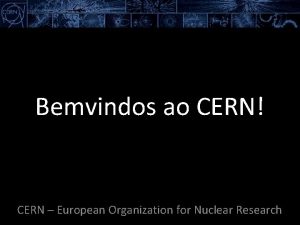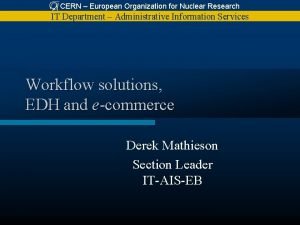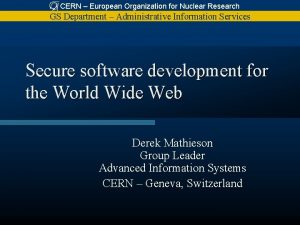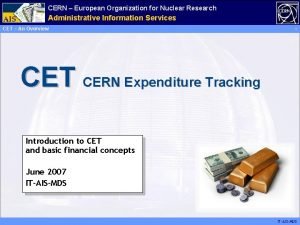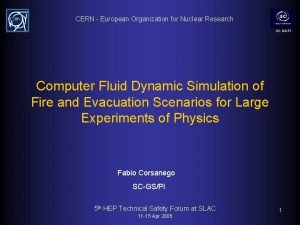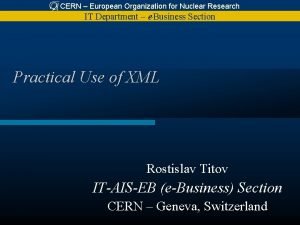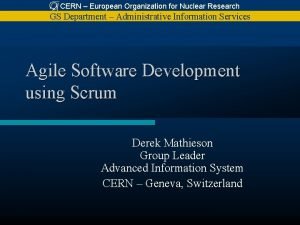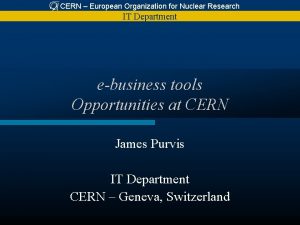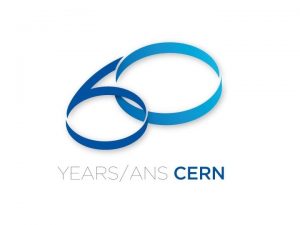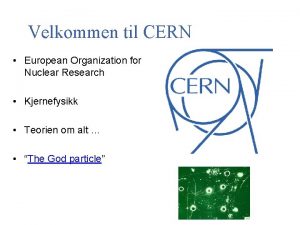CERN European Organization for Nuclear Research Founded in



















- Slides: 19


CERN European Organization for Nuclear Research • • • Founded in 1954 by 12 countries Now: 22 member states, 4 associate MS (India, Pakistan, Turkey and Ukraine) + 2 observers EU and UNESCO) Serbia, Cyprus and Slovenia are in pre-stage to membership More than 12000 users from all over the world ~1. 1 BCHF / Year operation budget 1954: Convention establishing the Organization - original signatures The 22 member states






LHC Experiments

ATLAS Cavern

Building CMS








FUTURE CLIC – Compact Linear Collider Unprecidented energies beyond LHC for electrons and their antimatter twins, positrons in 50 kilometer long accelerator complex FCC – Future Circular Collider An international collaboration to explore concepts for the most powerful particle collider in 100 kilometer long accelerator tunnel The High-Luminosity LHC HL-LHC project aims to increase the potential discoveries after 2025 by increaseing the LHC luminosity (the number of collisions occuring in a given amount of time. . .

Key Incredients to CERN´s success • Facility was a priority of the science community • Strong funding commitments and host role (CH+FR) • Organisation populated with critical experience • Realistic goals • Experience over ´hope´ • Openness and transparency • Collective ownership of problems and solutions • Success requires energy and enthusiasm
 Lesson 15 nuclear quest nuclear reactions
Lesson 15 nuclear quest nuclear reactions Fisión nuclear vs fision nuclear
Fisión nuclear vs fision nuclear European landowners organization
European landowners organization Process organization in computer organization
Process organization in computer organization Organization by point
Organization by point European strategy forum on research infrastructures
European strategy forum on research infrastructures European commission community research
European commission community research Fspos vägledning för kontinuitetshantering
Fspos vägledning för kontinuitetshantering Novell typiska drag
Novell typiska drag Nationell inriktning för artificiell intelligens
Nationell inriktning för artificiell intelligens Vad står k.r.å.k.a.n för
Vad står k.r.å.k.a.n för Varför kallas perioden 1918-1939 för mellankrigstiden
Varför kallas perioden 1918-1939 för mellankrigstiden En lathund för arbete med kontinuitetshantering
En lathund för arbete med kontinuitetshantering Underlag för särskild löneskatt på pensionskostnader
Underlag för särskild löneskatt på pensionskostnader Tidbok yrkesförare
Tidbok yrkesförare Anatomi organ reproduksi
Anatomi organ reproduksi Förklara densitet för barn
Förklara densitet för barn Datorkunskap för nybörjare
Datorkunskap för nybörjare Tack för att ni lyssnade bild
Tack för att ni lyssnade bild Hur skriver man en tes
Hur skriver man en tes





